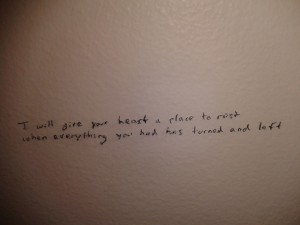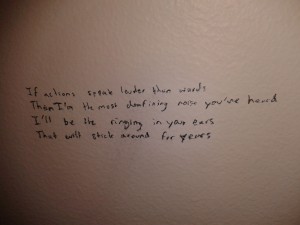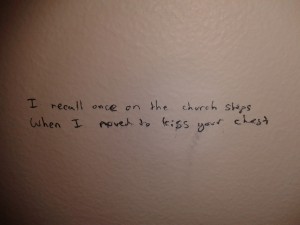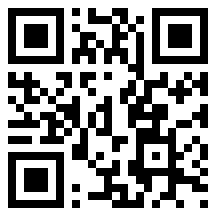The sum of my experience with hypertext prior to this class starts and ends with Shelley Jackson’s Patchwork Girl. The format of this work involves numerous nodes of text that you can click through at your own pace. Some of these nodes tend to follow a linear narrative, while others seem to bear little connection to the following and preceding nodes. It is nearly impossible (unless you have a lot of time on your hands) to read through each and every node on your first run-through. Nodes of text may repeat themselves, but this is almost never an indication that you are completely finished reading. It merely means that you must find a new starting point. All of the nodes were ultimately connected, telling fragments of the Patchwork Girl’s story. All led to the same “conclusion” (if you could call it that), though the means of getting there varies greatly for each new reader.
BKLYN Trash King was quite different from Jackson’s Patchwork Girl. The story played out like a choose-your-own-adventure game, though the choices were limited, and you were ultimately driven to virtually the same conclusion. At the start of this story, you are placed into the position of an individual engaged in attempting to fund a kickstarter project, which varies each time from ::: SmartJelly: A Wifi-Enabled LED Inside A Mason Jar ::: to ::: SteamCraft: The World’s First Steampunk M.M.O.R.P.G. ::: to ::: A DIY Tissue Box Ukulele Kit :::. However, the Wi-Fi cuts out, presumably because raccoons have been chewing through wires. Thus begins the adventure of finding the raccoon king in order to restore internet to your residence so you can continue to monitor your kickstarter project. While, as I said, there is a choose-your-own-adventure vibe, many of your choices are unimportant such as (“Look out the window” versus “Read the newspaper”). The only choice that really seems to matter is whether or not you will choose to strip down, tie raw meat to your body, and let raccoons eat the meat. You also have to choose whether or not to literally kiss the butts of said raccoons in order to get the BKLYN Trash King raccoon (who has an astonishing amount of followers on Twitter) to retweet your kickstarter project that seems doomed to fail. On my first play-through, I said “Hell no” to the repulsive demands of the raccoons, after which my character returned home to find the apartment wrecked. Following this, you quickly discover that the kickstarter project failed. I was confused, left wondering what was the point of it all. Wanting to see all of the options played out, I went through the story again and chose to do all of the repulsive tasks requested by the raccoons, which even having my character in the game do them was unsettling. Once I did this, I was asked whether or not I wanted to hang out with the raccoons (which led to my character drinking a lot of PBR and forgetting all about the kickstarter) or go home (which brought me to the same screens I received when I decided not to do any of the repulsive tasks set before me by the raccoons). In terms of the narrative, I was definitely confused as to the purpose of the story. As I said, the choices placed before me were relatively limited, and I found that I wasn’t rewarded for choosing one way or another. I suppose the internet is turned back on–though this seems to be the case in two of the three scenarios (refusing the tasks and performing the tasks but going home) since your character watches the project fail and the third indicates that nothing matters except PBR. The linearity imposed by the limited choices and conclusions offered by the author made me think that there must be a lesson to be learned from this story, but I was definitely unsure as to what the overarching point behind the story was.
One of the things that I found particularly interesting about this piece of interactive fiction and that helped me to interpret this work was the inclusion of external links (extra points for the inclusion of an external link to a video of an adorable slow loris eating a rice ball). At one point, you are led to a newspaper article about a real raccoon problem in Brooklyn. People seemed to be at their wits end trying to cage these witty creatures and relocate them elsewhere. So, the interactive fiction has a real-life story at its foundation, making the trip to see the raccoon king come across as a fictional solution (however ridiculous) to the problem facing the citizens of Brooklyn. Later, (if you click on the appropriate links) you are led to a TED talk by Seth Godin discussing “tribes” and the need for the average individual to invoke our shared cultural values and take charge in leading others toward change for the betterment of our communities. This shed a bit more light on this strange tale, because, while the methods utilized by your character are odd to say the least, at its heart this interactive tale relates a story about an individual trying to make a change in the community (by turning the internet back on), though as I said, I am unsure how much your actions, in terms of deciding whether or not to perform the tasks set before you by the raccoons, influence the return of the internet. However, your character does at least show some initiative in each scenario by going to see the raccoon king. Perhaps this is why the kickstarter project is doomed to fail in each scenario–because that’s not what really matters. As odd as it may be, perhaps by taking a water taxi to raccoon island, your character really did make a difference.















